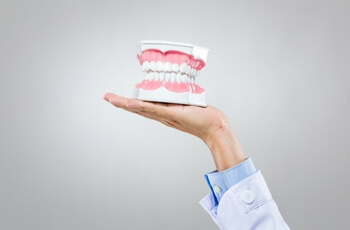
Is it time for a checkup with us? Call our practice to schedule your next visit.
Abutment: A tooth on either side of a missing tooth that supports a bridge or removable prosthesis. Or a piece of metal or porcelain screwed on to an implant to attach a crown.
Amalgam: A common filling material for repairing cavities. Made from silver, tin, zinc, copper and mercury.
Appliance: Any removable dental restoration or orthodontic device such as braces.
Bitewing: A single X-ray that shows upper and lower teeth. Used to check for decay between teeth.
Bruxism: The grinding or clenching of teeth, usually while sleeping. Bruxism can result from stress, misaligned teeth, disease or medicines.
Calculus: It’s not math! It’s a hard mineralized deposit that forms on teeth. Often stained yellow or brown. See tartar below.
Composite: A tooth-colored mixture of plastic and fine glass, quartz or ceramic particles used for fillings.
Dry socket: An exposed bone or nerve from a dislodged blood clot at the site of a tooth extraction.
Lingual: The surface of a tooth that faces the tongue.
Malocclusion: A misalignment of the biting or chewing surfaces of upper and lower teeth.
Panoramic X-ray: An X-ray that shows all the teeth in the mouth and the relationship of the teeth, jaws and head.
Plaque: A colorless, sticky substance formed from undigested food particles, saliva and bacteria. Neglected, plaque hardens into tartar or calculus.
Prophylaxis: The cleaning and polishing of the teeth to remove plaque, calculus and stains.
Restorations: A replacement for lost or missing teeth such as bridges, dentures, fillings, crowns or implants.
Tartar: Plaque that has formed a hardened deposit that adheres to teeth producing a rough surface that attracts plaque.
Veneer: A thin shell of custom-made tooth-col[o]red plastic or porcelain. Veneers are bonded to the front of the teeth to close spaces, straighten teeth and improve appearance.

